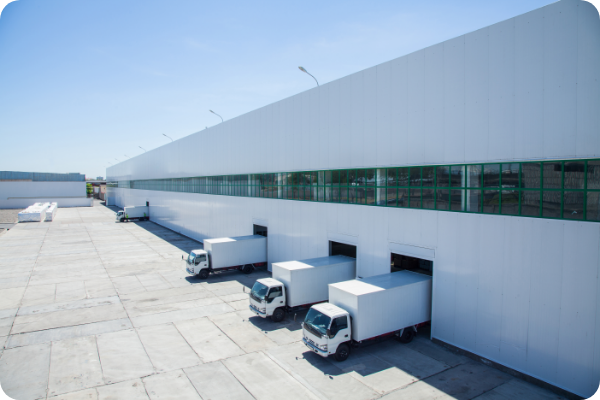Six trends are driving the expansion of micro-fulfilment centres
Micro fulfilment speeds up the delivery of goods by bringing items for delivery closer to the consumer. Smaller facilities, located strategically in urban areas, are allowing retailers and distributors to be more agile across the entire order-to-delivery process. Micro fulfilment services are on the rise. Consumers are increasingly buying more goods online; they expect same-day deliveries, at minimum or no cost, and the ability to return unsuitable items.

What is a micro-fulfilment centre?
Micro-fulfilment centres (MFCs) are small, usually, highly automated, mini-warehouse facilities operating near consumers—sometimes even within physical retail stores. They are usually less than 50 000 sq. ft. They work well in the grocery, apparel, and other fast-moving consumer goods (FMCG) sectors. The most popular items can be located where they are most needed. An MFC can be a purpose-built facility or a dedicated space within another building or warehouse. MFCs often act as the spokes in a hub-and-spoke distribution model. Although picking and packing may be automated and a software solution drives the order process, there is still a need for some human intervention.
The features of a well-functioning MFC are:
- it is highly automated to handle repetitive tasks. It will employ technologies such as driverless forklifts, automated shuttles, and mobile communications to maximise efficiency.
- It is connected digitally with the hub and with other MFCs to ensure effective real-time communication.
- It uses software solutions to manage inventory, order processing, packing, labelling, and transport logistics.
The pros and cons of micro-fulfilment
Some of the benefits are obvious: faster delivery, customer satisfaction, less staff required, and reduced warehouse and logistics costs. MFCs can be used as a pick-up point for customers or for courier deliveries. They can be sized according to need; more capacity may be needed during peak periods and at holiday time.
There are some challenges: adding new facilities comes with a cost and takes time to implement. Because storage capacity is limited, inventory management is more complex. There also may be an additional strain on transport availability and capacity. What is unknown is how the investment will provide the necessary payback as consumer preferences change and urban populations shift.
6 Trends driving micro-fulfiment
The future of micro fulfilment centres
Micro fulfilment is driven by consumers’ demand for faster delivery, but it’s also driven by retailers’ desire to cut costs and increase efficiency. Research and Markets estimate that MFC installations will grow more than 20 times by 2030, with the UK being only second to the USA. The major growth area is likely to be in grocery. The rising trend of MFCs allows businesses of all sizes to remain competitive, meet customer demand, and better optimize their fulfilment operations.
The decision to implement one or more MFCs depends on cost, space availability and adoption of the most suitable technologies. Our experienced warehouse consultants can help guide you through the process, from planning and design to implementation and ongoing optimisation. Our consultants have a deep understanding of the latest industry trends and technologies as well as they can help you develop a customised solution that meets the unique needs of your organisation.














